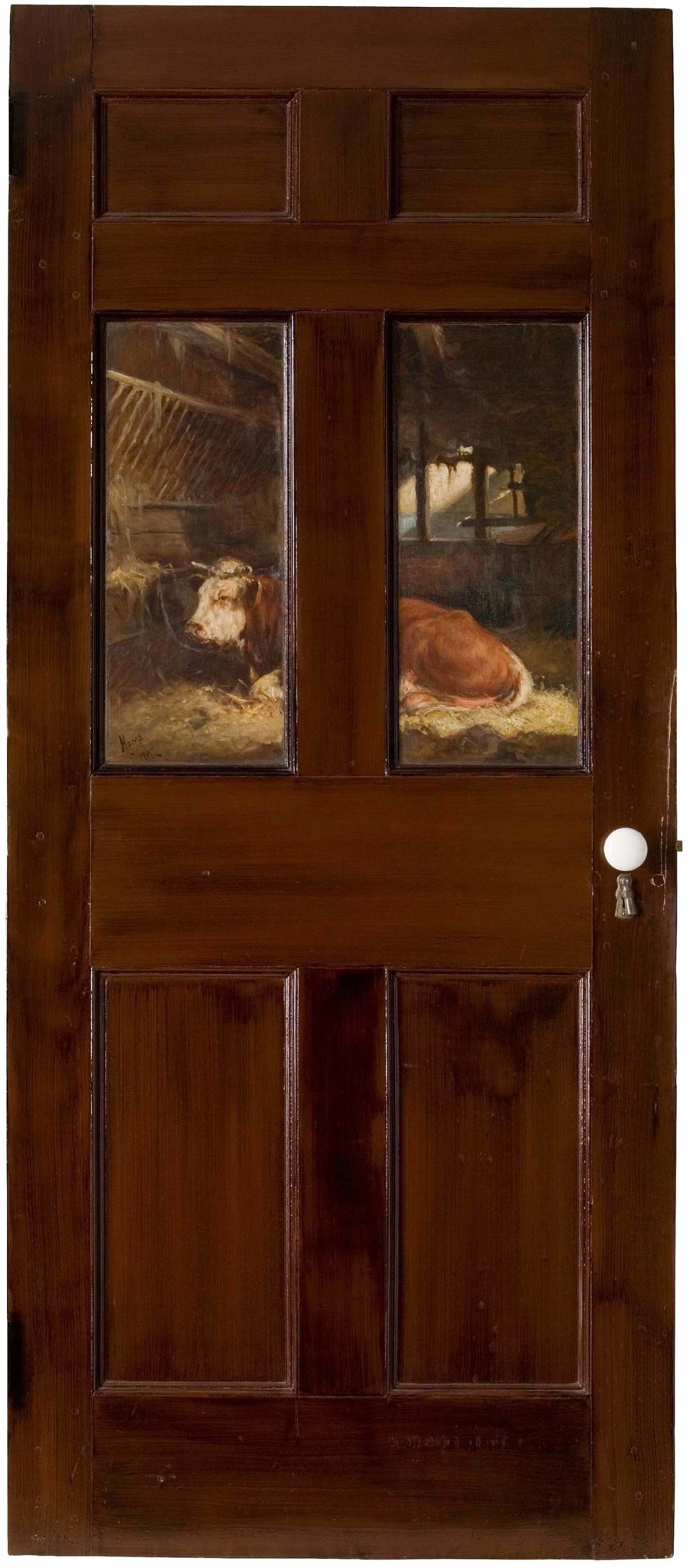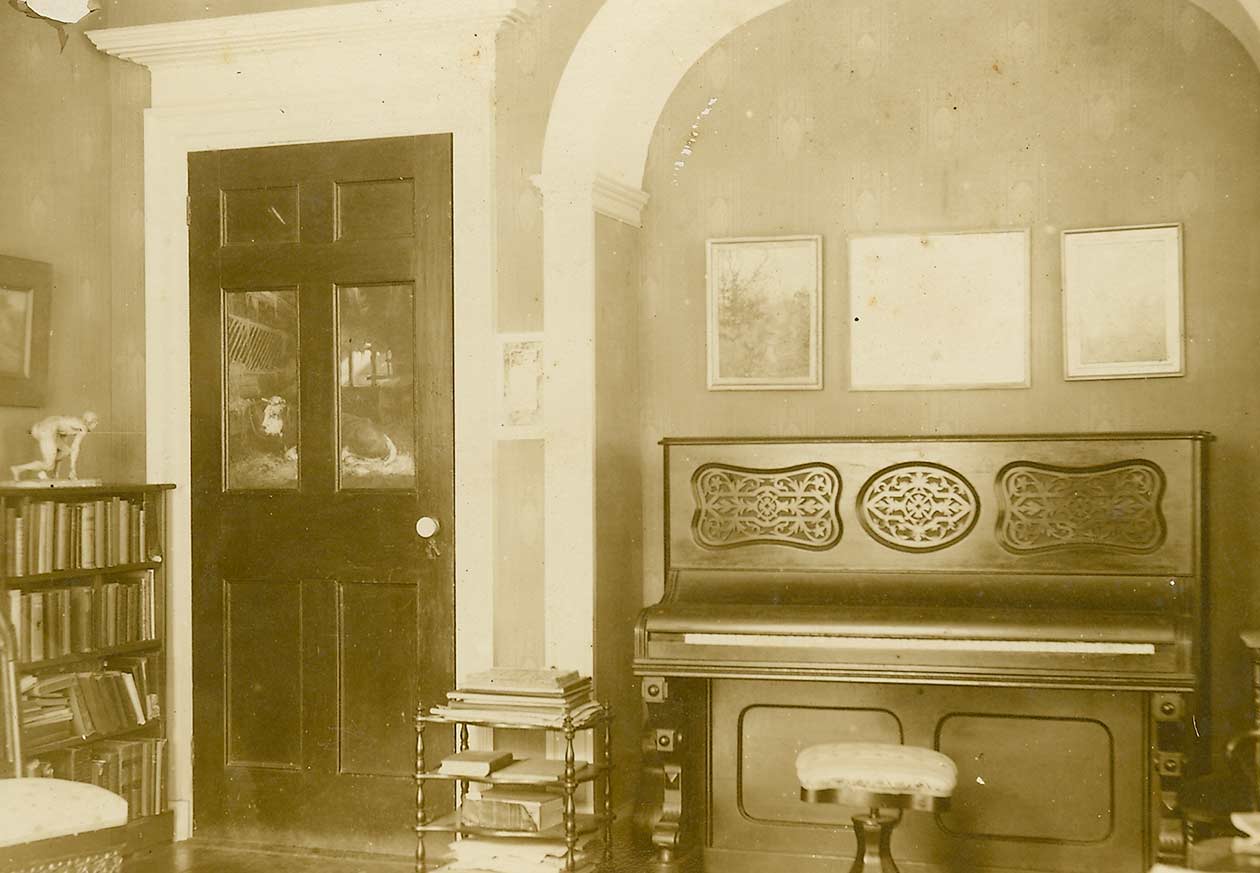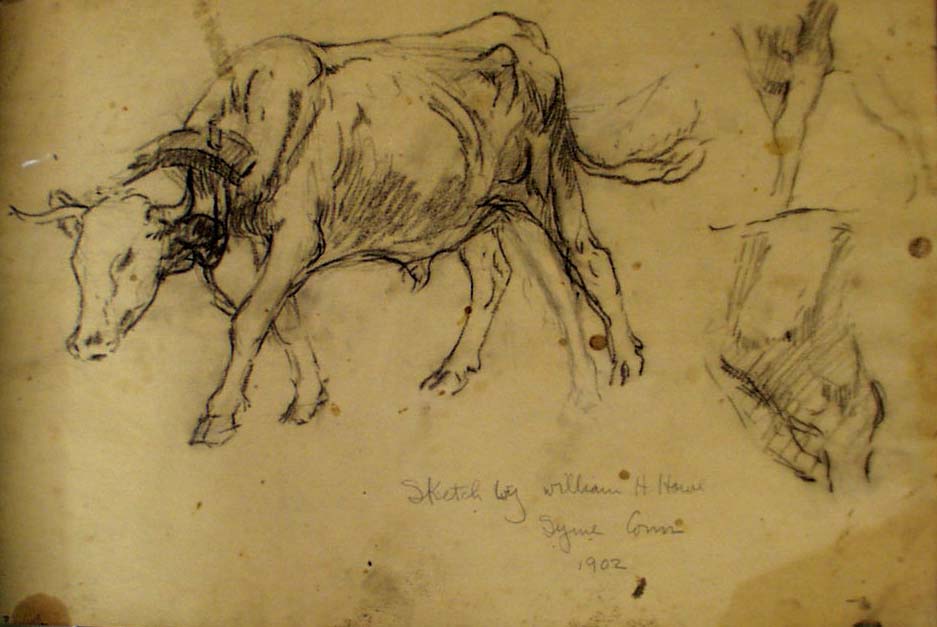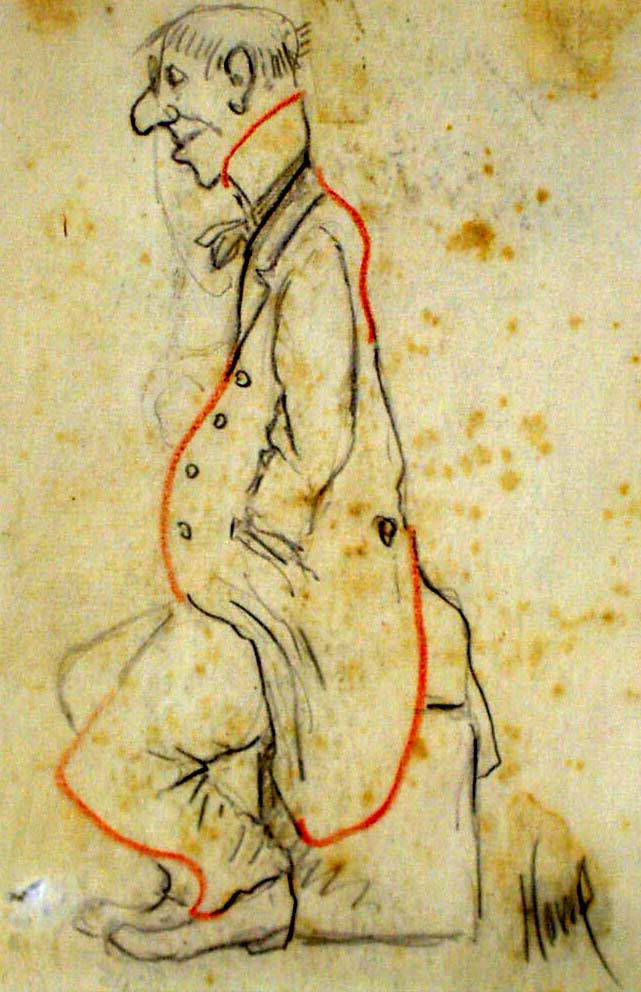Collections
In Situ: The Painted Panel
- Museum Hours: Tuesday through Sunday, 10am to 5pm. Discovery Sundays: 11am-4pm each Sunday.
William Henry Howe (1846 – 1929)
Normandy Bull (Monarch of the Farm)
William Henry Howe decorated a door in the Griswold House parlor in the summer of 1901 with a Normandy bull lying in a stable. Howe was so famous a painter of cattle that the other artists must have known he would portray a cow or bull, even though such an image was inappropriate for a formal living room. They may have been surprised, however, that he reproduced a painting he had shown ten years earlier at the Paris Salon. Monarch of the Farm had been so popular a work there that Howe must have liked the notion of painting it again in Old Lyme.
Howe’s panel “opens” the parlor to a stable with an opening of its own in the far end, which carries a viewer’s eye even deeper into space.The illusion of depth is furthered by the horizontal lines that delineate a wall of the stable in the manner of linear perspective, the traditional device of artists from the time of the Renaissance to give a sense of depth to a flat surface. We see the “monarch” in one of his peaceful moments, but the realistically detailed modeling of his form speaks of a powerful creature that one would never want to rile. We are glad to have a door between us, in case his mood changes. Howe himself made sure that he always painted a bull from behind a barrier like a stone wall. Since he finished his pictures in the studio, he could add any setting he liked. Notice his nice touch of having a shaft of light slant downward toward the bull’s white head.
WILLIAM HENRY HOWE (1846-1929)
NORMANDY BULL (MONARCH OF THE FARM), 1901
OIL ON WOOD DOOR PANELS
GIFT OF THE ARTIST

Howe was so identified with images of cattle that he was constantly teased about it. In the community of artists and writers at Lawrence Park in Bronxville, New York, where he lived, he was Mr. Howe Cow.
At Old Lyme, where he spent summers for two decades, he was fondly known as Uncle Howe and was expected to carve at dinner because of his superior knowledge of animal anatomy. Jokes aside, artists and critics agreed that “Howe’s Cows” were splendid. He won impressive awards. His work was even seen on pouches and posters for the Bull Durham Tobacco Company.






